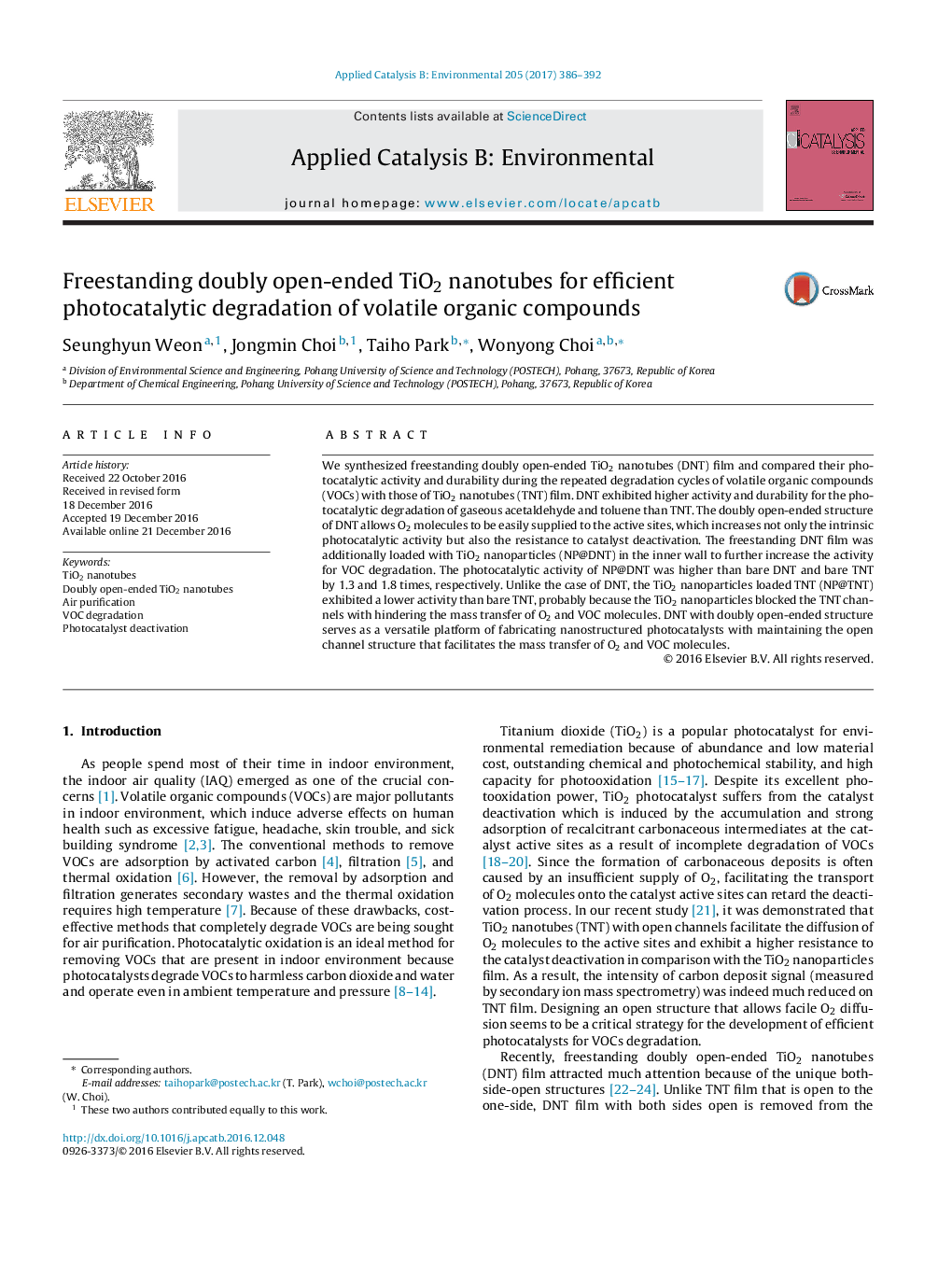| Article ID | Journal | Published Year | Pages | File Type |
|---|---|---|---|---|
| 6454349 | Applied Catalysis B: Environmental | 2017 | 7 Pages |
â¢Doubly open-ended TiO2 nanotubes (DNT) exhibit higher activity and durability for the photocatalytic degradation of VOC than TiO2 nanotubes (TNT).â¢The inner wall of DNTs is additionally loaded with TiO2 nanoparticles to further increase the photocatalytic activity.â¢The doubly open-ended channel structure of DNT should facilitate the mass transfer of O2 and VOC molecules to enhance the photocatalytic efficiency.
We synthesized freestanding doubly open-ended TiO2 nanotubes (DNT) film and compared their photocatalytic activity and durability during the repeated degradation cycles of volatile organic compounds (VOCs) with those of TiO2 nanotubes (TNT) film. DNT exhibited higher activity and durability for the photocatalytic degradation of gaseous acetaldehyde and toluene than TNT. The doubly open-ended structure of DNT allows O2 molecules to be easily supplied to the active sites, which increases not only the intrinsic photocatalytic activity but also the resistance to catalyst deactivation. The freestanding DNT film was additionally loaded with TiO2 nanoparticles (NP@DNT) in the inner wall to further increase the activity for VOC degradation. The photocatalytic activity of NP@DNT was higher than bare DNT and bare TNT by 1.3 and 1.8 times, respectively. Unlike the case of DNT, the TiO2 nanoparticles loaded TNT (NP@TNT) exhibited a lower activity than bare TNT, probably because the TiO2 nanoparticles blocked the TNT channels with hindering the mass transfer of O2 and VOC molecules. DNT with doubly open-ended structure serves as a versatile platform of fabricating nanostructured photocatalysts with maintaining the open channel structure that facilitates the mass transfer of O2 and VOC molecules.
Graphical abstractDownload high-res image (134KB)Download full-size image
